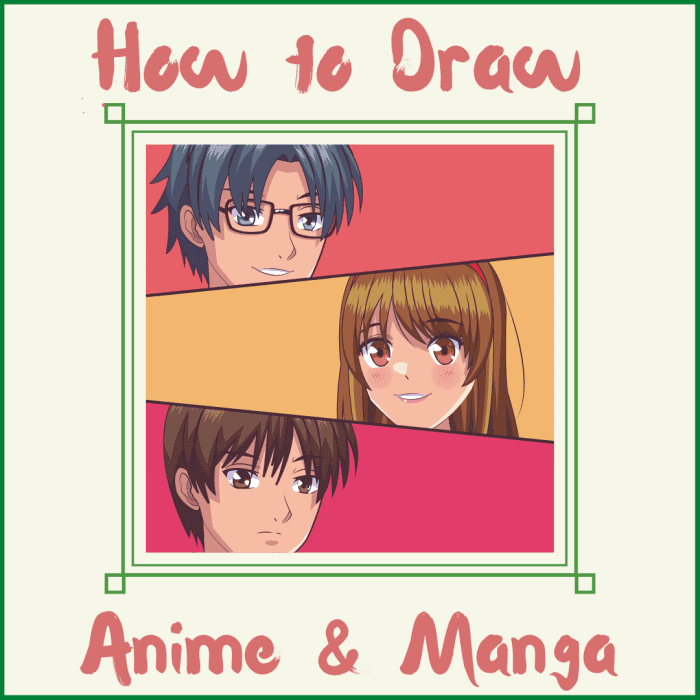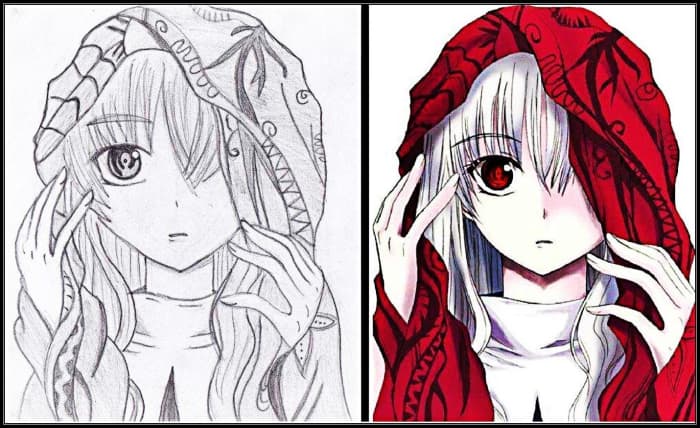How to Draw Anime for Dummies
PS has been watching anime as long as she's been living. For her, it's a perfect getaway to the cherished world where everything's possible.

Learn to draw the anime and manga you've always wanted to create!
A Beginner's Guide to Drawing Manga and Anime
Have you ever wondered how anime and manga are drawn? Being an anime lover and a manga reader, you must be curious to make something of your own. It's amazing how a pencil can do so many wonders—all you need is practice and inspiration. To help you start, I have broken down the crucial steps you may need to create your first-ever anime or manga drawing. I hope you'll find it helpful.

How to Draw Anime and Manga: A Step by Step Guide
6 Steps for Creating Your First Anime or Manga Drawing
- Draw the Basic Shapes
- Master Perspective Drawing
- Grasp Basic Anatomy
- Shade Your Work
- Use Color Theory
- Use Reference Material

Start with drawing the basic objects
Step 1: Start by Drawing the Basic Shapes
Drawing anime characters is fascinating and looks pretty hard—but, interestingly, all your favorite characters (from simple to extremely complicated) are born out of basic shapes like circles, squares, triangles, and so on.
Start by improving your basic drawing. Practice simple figures like straight lines, circles, rectangles, ovals, and other similar shapes. This sounds boring (it actually is), but everyone who draws has started from this "baby" stage, so why should it be any different for you? To build complex structures, you need to first master simplicity. This will help you improve your drawing and your creative vision.
Try drawing these basic shapes for a few minutes daily. Then, draw anything that fits your imagination. You can try combining these basic shapes to make real-life figures; for example, you can use squares or rectangles of different sizes to build basic human anatomy. One such example is given in step 3 below.

Master Perspective Drawing
Step 2: Master Perspective Drawing
Perspective means that things appear smaller when looked at from a distance. And perspective drawing is a method of enhancing the 2D object to give it a look of three-dimensionality. A great example is a cube, as shown above. Though all the sides are equal, they appear smaller from a distance. All cubes appear to be 3D objects.
Perspective drawing can be one-point, two-point, and multi-point. The cube shown here is an example of a two-point perspective drawing. An example of one-point perspective is looking straight on a road—the view that you witness is a one-point. Examples of third-point or multi-point perspective include complex objects like buildings, vehicles, or characters.
You should begin with cube drawing, then try other shapes like cuboid, cubical, sphere, then barge on the complex structures like a cupboard, bed, and so on. Third-point (or multi-point) perspective is often compared with the bird's-eye view.
Perspective drawing is a subject in itself. Before moving on, I suggest you learn every aspect of this technique. It takes time and effort, but it is extremely helpful.

Grasp the idea of basic anatomy
Step 3: Grasp Basic Anatomy
In anime and manga, it actually sort of looks right if the characters are not perfect imitations of real-life human beings. However, giving them the right body structure enhances their personalities, and viewers can relate to them more as you convey the characters' thoughts and emotions through their physique.
Read More From Feltmagnet
The good thing is, learning basic anatomy isn't tough at all. You have already mastered steps 1 and 2—now all you have to do is combine these two steps and practice the anatomy. Before that, make sure you know the proportions and placement of different body parts. In other words, first know the rules (basic anatomy) before you intend to break them and try to mold your unique character.

Shade your work
Step 4: Shade Your Work
Shading is important—it gives your drawing a real-life look. It enhances the two-dimensional object and creates a sense of three-dimensionality. To perfect your shading skills, first look at how objects of different sizes and surfaces reflect light. The basic rule remains the same for everyone—i.e., the side of the object towards the light source is the lightest and the one away from the source is the darkest.
Correct shading not only improves perspective, but also indicates the environment, time of the day, and weather as well. Consider an example of a character standing on a street on a sunny day. As you must have already imagined, the character's shadows are fairly sharp, with sheer contrast between light and shaded areas. When the day is foggy or rainy, the shadows become blurry and the contrast between light and shaded areas is less distinguishable.
In anime and manga both, shading is rarely used to show shadows unless needed to describe the scene. One such example is given below: The scene of Kenny Ackermann chasing Captain Levi in season three of Attack of Titan is a perfect example of shading in anime.

Kenny's and near-by buildings' shadows on the ground

Kenny's complete shadow when no tall building is near

Kenny's stature is given the same outlook as his shadows.
If you understand aspects of lighting and perspective, then shadowing is one of the easiest parts of a drawing. Start by a drawing simple object like an apple. Getting the right angles takes time and precision, which is important to make the scene appear more realistic.
The right shading shows the real difference between an amateur and a professional. So, make sure you shade perfectly.

Study color theory and learn how to use the right colors for different situations
Step 5: Use Color Theory
Colors speak volumes without using any words to describe them. To use color effectively, you should be aware of simple theories like warm, cool, and complementary colors. Each color helps depict specific situations—for example, white is a symbol of peace. You can draw characters in white clothes if they are supposed to be plain and simplistic. The color red is used to illustrate anger and rage—and someone who is peppy and wants to stand out. Pink and blue are often used respectively for girls and boys.

Ren Tsuruga and Shoutarou Fuwa in the anime Skip Beat!
An exemplary use of colors is shown in Avatar: The Last Airbender, where the characters from different nations are shown with their respective colors. Water Tribe is shown in blue, Fire Nation has a red color, the Earth Kingdom is green, and Air Nomad is Yellow.
Another perfect use of color can be seen in the anime Skip Beat! The deuteragonists Ren Tsuruga and Shoutarou Fula have been given appropriate colors as per their personalities. While Ren acts mature and reserved, Shoutarou is restless and outgoing—which you can see from their appearance. Check the above image for reference.

Start drawing with a reference material (Yuno from Black Clover)
YouTube @Azz Art Gallery
Step 6: Draw With Reference Material
Getting everything right in the first few attempts is pretty rare. It's better to start with reference material. Sometimes what you think is best may not really work the same way in reality. If you are drawing a historical character, then start by researching other, similar characters. Study their personalities, statures, colors, and how their faces are drawn to show the types of characters they are.
You can also follow specific manga artists and should definitely check other people's work, especially when you are a beginner. Most famous artists have distinguished approaches, You can also look at photographs or take inspiration from real-life objects, animals, and human beings. An example in the image above is Yuno from the anime Black Clover (the manga artist is Yuki Tabata). Yuno is serious, handsome, and sophisticated. He also has the power of the wind. All these attributes are clearly identifiable in this drawing.

Keep practicing
Instagram @DNF_Artist
Remember: Keep Calm, Keep Improving, and Keep Practicing
Learn drawing characters isn't a matter of a day's or even a week's work: It takes time and attention to minute details. Every famous artist started from this stage, and you can be just like them.
It's highly likely that things won't turn out the way you want them to, but don't let this discourage you or make you lose your motivation. You should take a break and then try another day. If the drawing is still not good enough, then you still need to master the basics and some perspective techniques. Make your basics strong, and then it will be easier to create more complex structures.
© 2020 Prachi Sharma
Source: https://feltmagnet.com/drawing/How-to-draw-anime-and-manga-A-Step-by-Step-guide
0 Response to "How to Draw Anime for Dummies"
Post a Comment